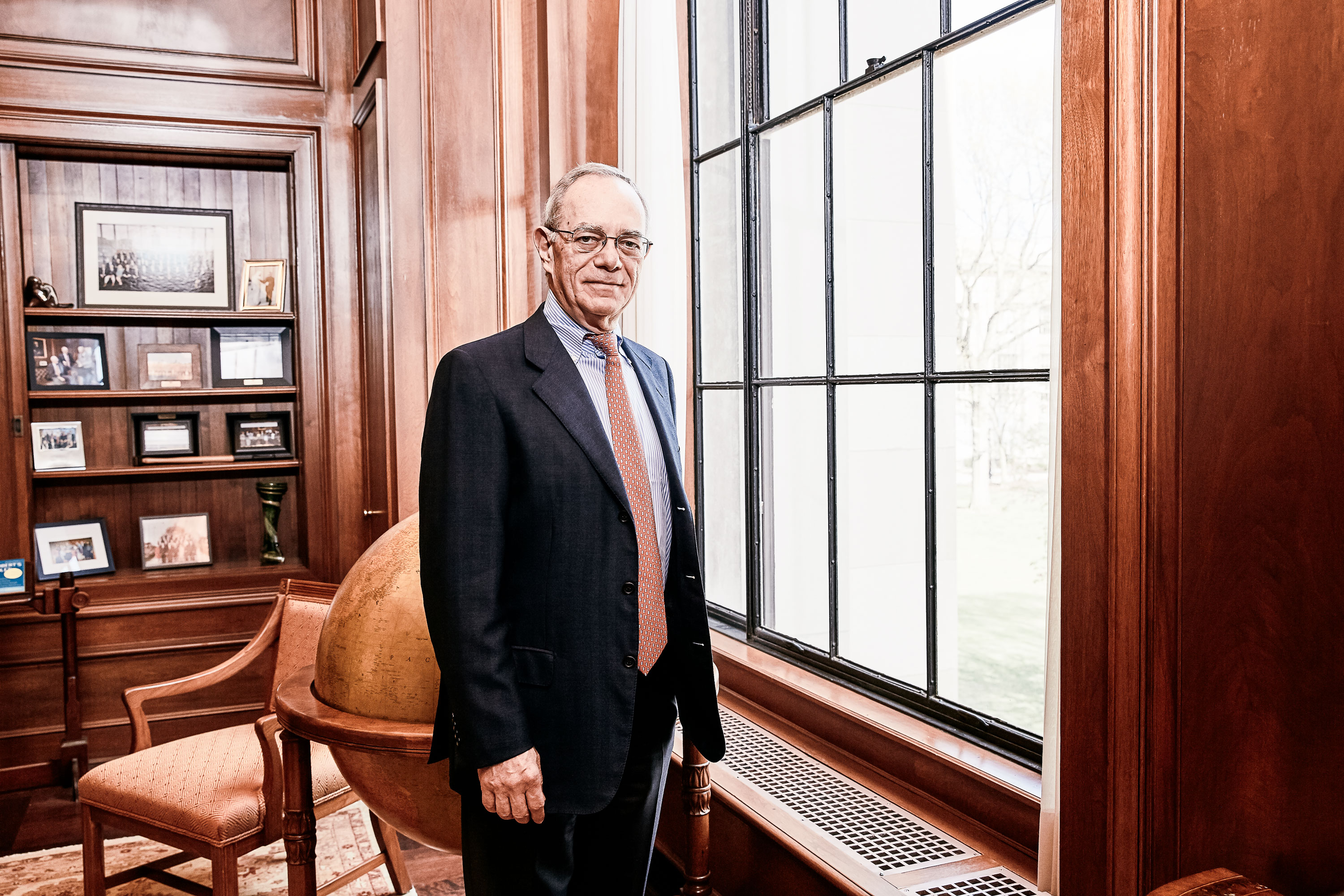Shaping the AI revolution
Restructuring MIT to prepare for—and help define—the future of computing.

With October’s announcement of the MIT Stephen A. Schwarzman College of Computing, the Institute committed itself to a serious restructuring—the most profound since the early 1950s. As the pervasiveness of computing and the rise of AI are reshaping society as a whole, concerns about the societal impact and ethical use of these technologies are increasing as well. Indeed, the fact that other leading universities have begun to announce their own moves in this domain reinforces the importance of priming MIT to educate students for leadership in the computing-intensive future.
In this changing landscape, the MIT Schwarzman College stands out in several ways, starting with its transformative scale. This $1 billion effort, given immense momentum by the $350 million founding gift, represents the largest concerted investment in computing and AI by an American academic institution.
Just as important, MIT Schwarzman will function as a distinctively cross-cutting academic entity. Since the creation of MIT Sloan and the precursor of SHASS nearly 70 years ago, MIT has thrived with its five schools—academic neighbors with their own specialties that freely share ideas across disciplines. Yet the concept of the new college goes further. We are not merely adding 50 faculty; we are adding 25 faculty in computing fields and 25 with joint appointments in both the college and their respective disciplines. And while we expect the college to accelerate the adoption of AI tools in many other fields, it will also tap their wisdom to influence the future of computing.
To this distinctive foundation we add an intense concern about advancing the research on these technologies and educating students on their ethical use and how they can be developed deliberately to serve the good of all.
Before and since the announcement, we have sought and received input from across the MIT community, through avenues including forums for alumni, students, faculty, and staff. (You can find answers to common questions at technologyreview.com/schwarzmancollege.)
Some have asked why we announced the college when key questions about its function are still being answered. In part, we felt the need to move swiftly in the race for talent. But above all, we purposely shared the idea while the clay was still wet, so that the college’s final shape would reflect the wisdom of the whole community. I look forward to seeing it take shape in the months to come.
Keep Reading
Most Popular
Large language models can do jaw-dropping things. But nobody knows exactly why.
And that's a problem. Figuring it out is one of the biggest scientific puzzles of our time and a crucial step towards controlling more powerful future models.
The problem with plug-in hybrids? Their drivers.
Plug-in hybrids are often sold as a transition to EVs, but new data from Europe shows we’re still underestimating the emissions they produce.
Google DeepMind’s new generative model makes Super Mario–like games from scratch
Genie learns how to control games by watching hours and hours of video. It could help train next-gen robots too.
How scientists traced a mysterious covid case back to six toilets
When wastewater surveillance turns into a hunt for a single infected individual, the ethics get tricky.
Stay connected
Get the latest updates from
MIT Technology Review
Discover special offers, top stories, upcoming events, and more.